In 1984, General Motors (GM) and Toyota established the New United Motor Manufacturing, Inc. (NUMMI) in Fremont, California, marking a groundbreaking collaboration between a U.S. and a Japanese automaker. This venture aimed to produce small, fuel-efficient vehicles for the American market, combining GM’s design expertise with Toyota’s renowned manufacturing efficiency. The partnership not only revitalized GM’s production methods but also introduced the Toyota Production System to the U.S., significantly influencing automotive manufacturing practices. This collaboration set a precedent for future joint ventures, highlighting the potential of cross-cultural partnerships in driving innovation and shaping automotive culture. (global.toyota)
As a Phoenix transplant, I often find myself confused by other drivers. Why do they drive so fast? Why is everyone so aggressive? (Those questions may explain why there are so many accidents on the Loop 101.) Within the past two years, several other questions have come to mind: Why have I seen people here drive with a phone up to their ear? Don’t they know Bluetooth exists?
I could understand people not being aware of Bluetooth if it was some newfangled technology that came out last year, but that’s not the case. Its origins date back to 1996, when Intel, Ericsson, and Nokia “met to plan the standardization of … short-range radio technology to support connectivity and collaboration between different products and industries,” according to the Bluetooth website. The name Bluetooth was inspired by a historical figure from centuries earlier: King Harald Gormsson, who was nicknamed “Bluetooth” for the color of his dead tooth. He united Denmark and Norway in 958, much as Intel and its competitors wanted to connect the PC and cellular industries with a short-range wireless link.
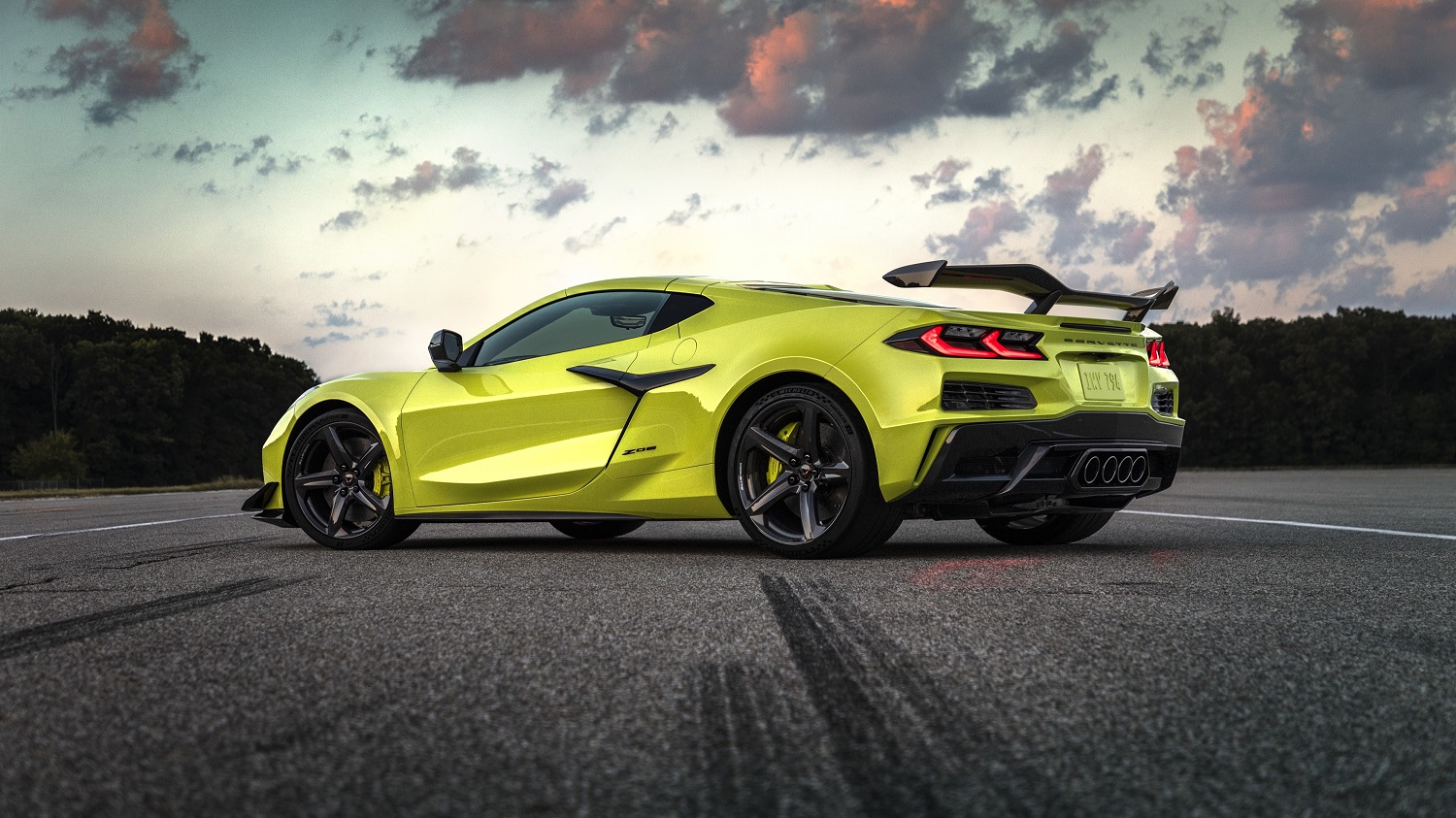
Bluetooth, whether factory-installed or in an aftermarket head unit, has been available in cars for several decades, providing users the ability to stream music and carry on phone conversations through their vehicle’s sound system while on the go. Practically every new car has it these days, especially the pricey ones. Despite this, I have seen three people holding their smart phone to their cheek as they drive. Two of them were in late-model Bentleys; the person I spotted doing this most recently was behind the wheel of a C8 Chevrolet Corvette Z06. I know the ’90s are back in style these days, but there’s a big difference between wearing a baggy shirt and keeping one hand on your phone while you cruise. It’s distracting to the driver and the people who drive past who are struck by the odd sight of a person so clearly and needlessly living in the past (business idea: start selling throwback “Perot for President” bumper stickers).
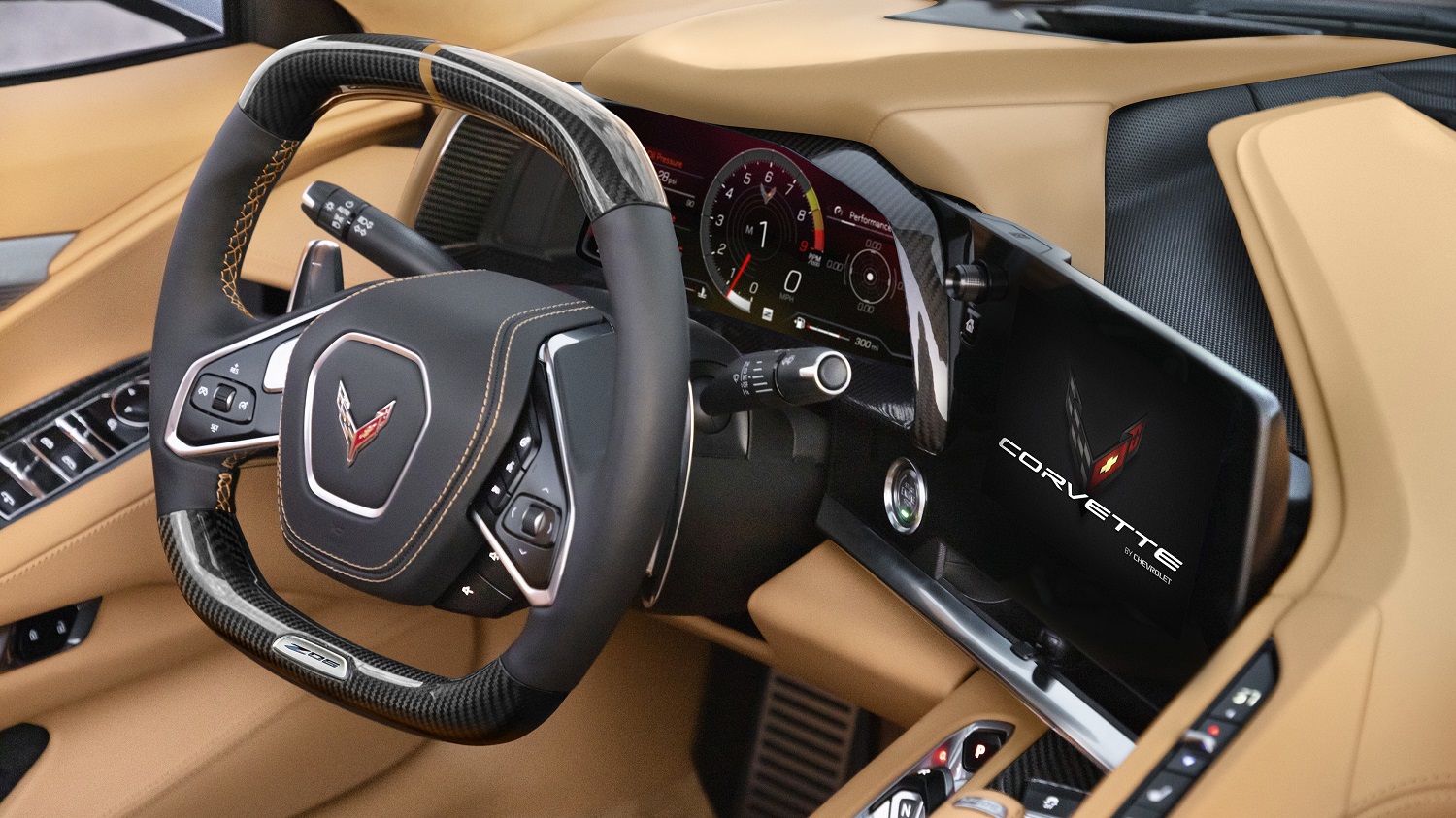
Perhaps the people I saw living in yesteryear were in rentals or in cars owned by the dealerships that employ them. Maybe they didn’t want their personal phone linked to a car that wasn’t theirs. Whatever the case may be, it’s possible to delete your phone from a car’s Bluetooth system.
I understand a certain reluctance to embrace tech because some of it can be unnecessarily convoluted (having to adjust your power mirrors using an infotainment system’s touchscreen, for instance), but I’ve connected my iPhone to the Bluetooth in hundreds of review vehicles over the last decade without an issue. It makes life so much easier—for those who let it.
During Monterey Car Week, we got an up-close look at the Lamborghini Essenza SCV12, which was unlike anything you’d ever spot on the street. Built by Squadra Corse in 2020, it’s Lamborghini’s most extreme track-only car ever! Only 40 were made, with just 7 making it to the U.S. This one, chassis 11604, has single-digit road miles (it hasn’t been driven on a track) and it’s the only Essenza in the world with crimson-tinted exposed carbon fiber. Underneath the rear bodywork is Lamborghini’s most powerful naturally aspirated engine ever: a 6.5-liter V12 that pumps out 819 horsepower and screams to 8,500 rpm. In person, the Essenza SCV12 seemed less like a car and more like a prototype racer with a Lamborghini badge. It sold for a whopping $1,490,000 at auction!
This video is sponsored by our friends at Borro. For the trusted source in liquidity when you need it most, call Borro today at (720) 458-6788 or learn more at borro.com.
Subscribe to the CCN Media YouTube channel for more Monterey Car Week 2025 content.
It has been over 13 years since the legendary Carroll Shelby passed away at age 89, but the iconic Mustangs that his team crafted continue to captivate performance-car enthusiasts around the globe. Featured on AutoHunter is this 1966 Ford Mustang Shelby GT350H fastback. It is being sold by a dealer in Scottsdale, Arizona, and the auction will end Friday, October 3, 2025, at 12:45 p.m. (PDT).
Nicknamed “Rent-a-Racer,” the GT350H was a high-performance variant of Ford’s popular pony car that was made available to the public via a unique partnership with the Hertz rental car company. The ‘H’ in the car’s name, as one would expect, indicated that it was part of the Hertz program. A May 1966 story from Car and Driver says that the going rate for such a rental—in New York, anyway—was $17 per day and 17 cents per mile.
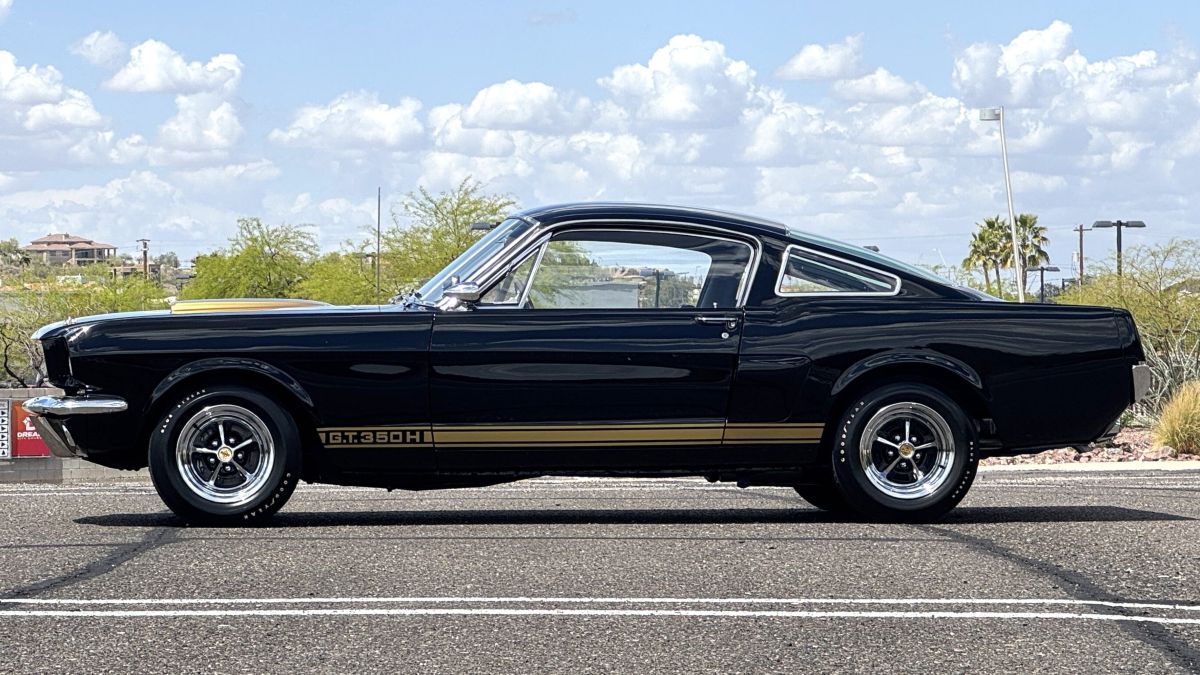
Most of the 1,001 produced GT350H models were finished in Raven Black (code A) like this one. According to the listing, the car went through refurbishment in 2021. Noteworthy exterior features include chrome brightwork, hood pins, gold striping, driver’s-side mirror, and 14-inch Magnum 500-style wheels wrapped in Goodyear Blue Streak tires. The interior has been graced by Shelby’s signature on the dashboard. Cockpit equipment includes black vinyl low-back bucket seats, lap belts, AM radio, heater, Cobra-branded shifter, and wood-look tilt-away steering wheel.
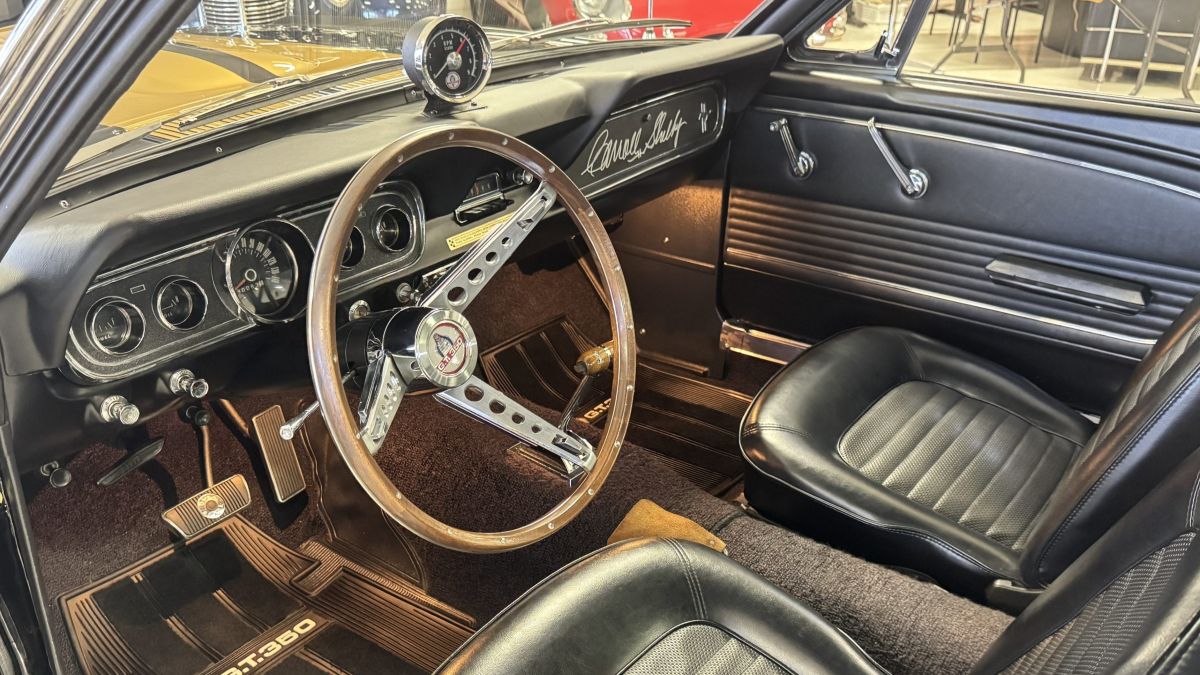
Shelby’s primary Los Angeles facility, which was located near LAX airport, handled the many upgrades that would set apart a stock Mustang from a GT350—the most notable of which included enhancements to the drivetrain and suspension. Under the hood of this GT350H is a Hi-Po 289ci V8 mated to a SelectShift Cruise-O-Matic C4 three-speed automatic transmission. One big update took place later in life when the car received a Paxton supercharger, which was available from the factory.
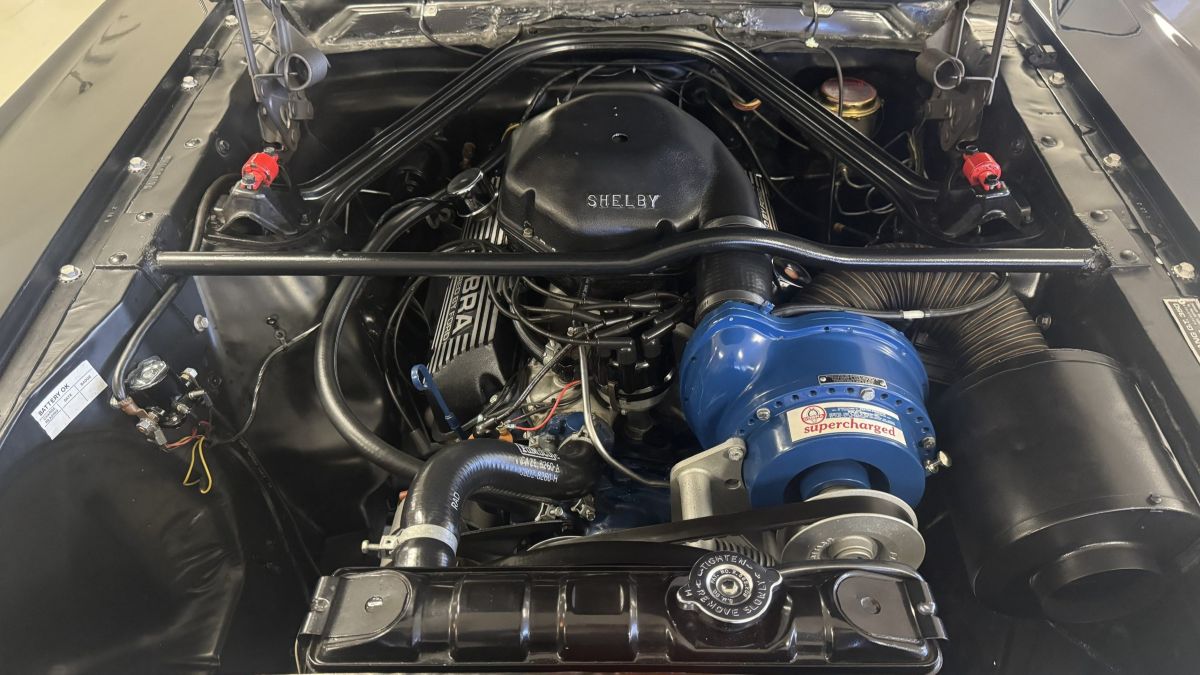
The AutoHunter listing outlines some of the car’s mechanical features, which include an Autolite 595cfm four-barrel carburetor, cast-aluminum high-rise intake manifold, “tri-Y” headers, a baffled aluminum oil pan, and Cobra valve covers. The odometer shows 80,092 miles, which the selling dealer asserts to be an accurate reading (the title reads mileage-exempt).
Car and Driver said, “Good things do come for the driver of a GT350. Its cornering ability is a lovely mixture of the beast getting the better of you and you keeping hold of the tiger’s tail. The taut suspension, well-controlled geometry, and big tires suffice to keep it on the road at insane speeds.”
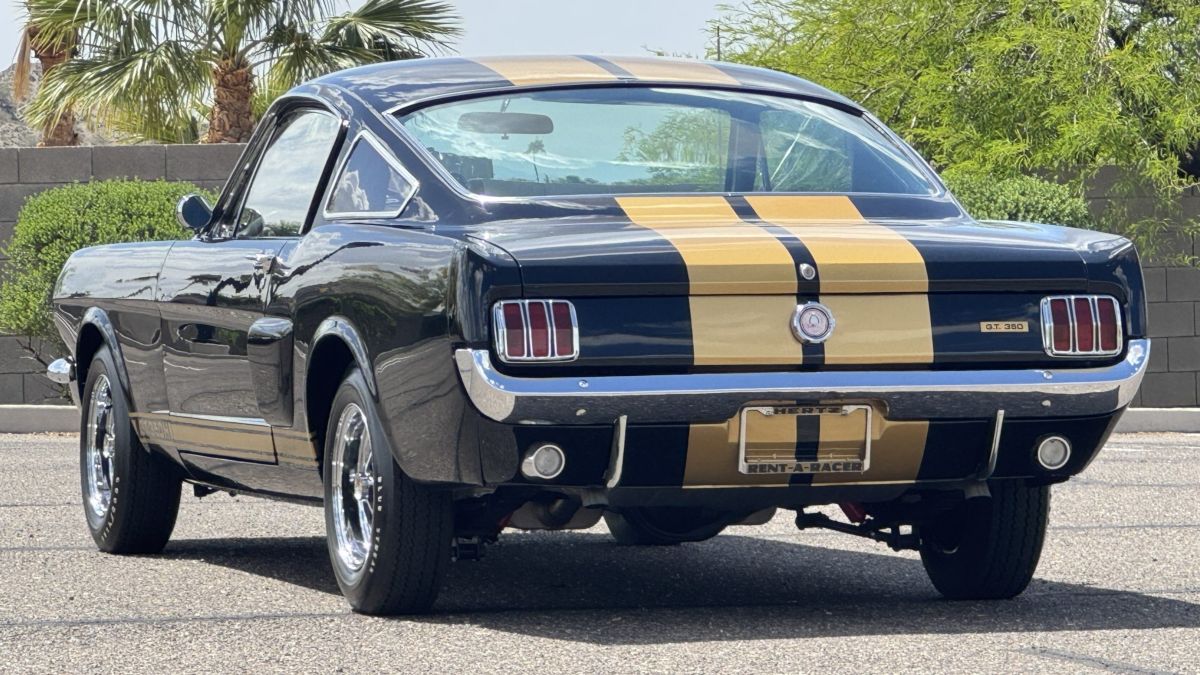
After seeing that the GT350H went for $17 per day in 1966, I was curious how much it would cost to rent a high-performance car in modern day. Turns out, a 2010 Ferrari California can be rented for $381 per day in Phoenix via Turo. Given the choice, though, I’d opt for a classic Shelby all day long.
The auction for this 1966 Shelby GT350H Fastback ends Friday, October 3, 2025, at 12:45 p.m. (PDT). Accompanying the car are a copy of the original delivery receipt and a serial number verification document from the Shelby American Automobile Club.
Visit the AutoHunter listing for more information and a photo gallery
If you commonly associate the BMW M3 with the coupe (and maybe a convertible), you’re not alone. But if you visit a BMW dealership today, you’ll find that every M3 is a sedan. It’s easy to prefer the coupe—now known as M4—but our Pick of the Day is a vehicle that will make you forget about the Bimmer with the two doors. This 2011 BMW M3 Competition Sedan is listed on ClassicCars.com by a dealership in Oviedo, Florida.
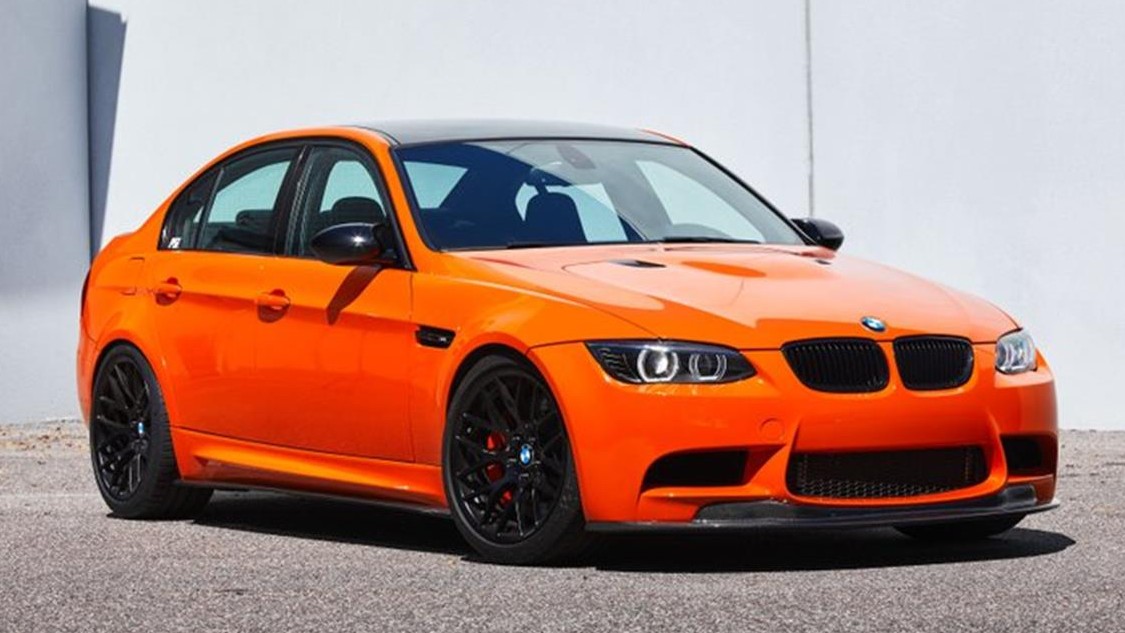
The M3 first appeared in 1986 in the generation known as “E30”. Much like the Dodge Charger Daytona and Plymouth Road Runner Superbird were homologation specials for NASCAR, the M3 was the same for the DTM and Group A Touring series. It was powered by a 2.3-liter DOHC inline-four putting out 197 horsepower but, thanks to the feds in DC, those with a catalytic converter lost five horses. The M3 was mainly available as a coupe, though a handful of cabriolets were built—none for the American market.
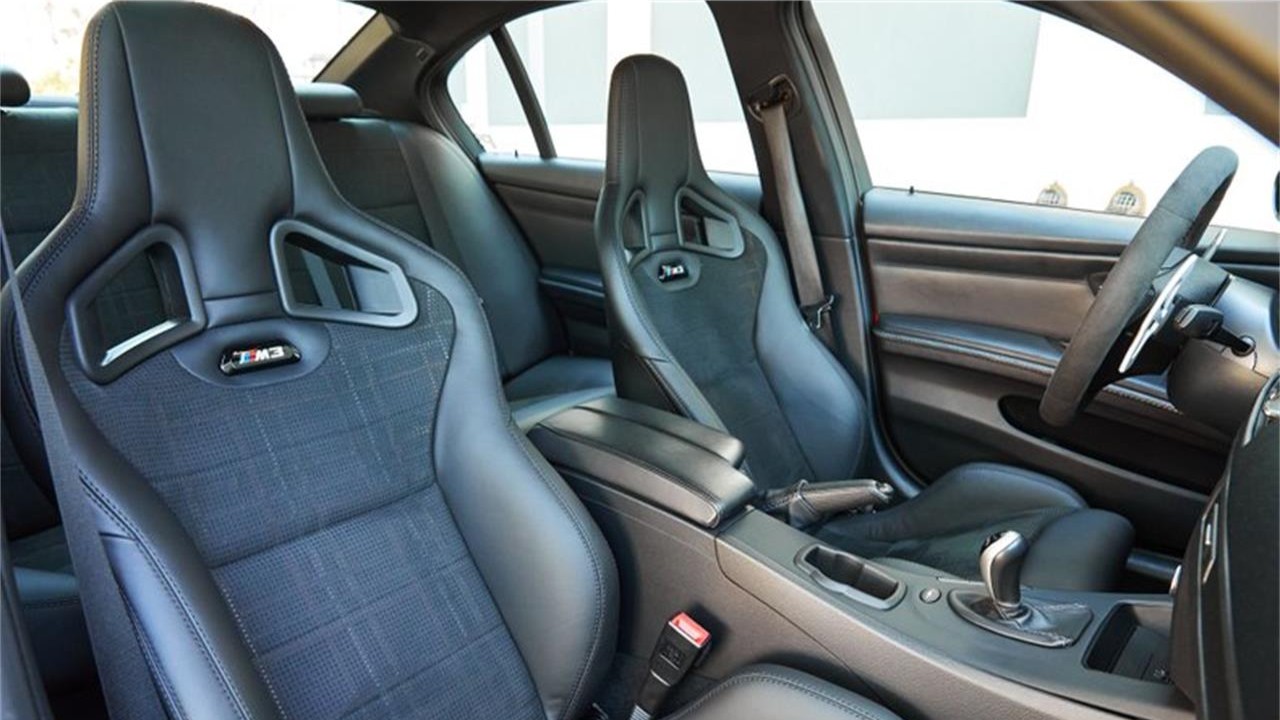
The M3 moved into the “E36” generation for 1993, though it didn’t appear in North America until 1995. New was a 3.0-liter DOHC inline-six rated at 282 horsepower but, once again, North Americans had to make do with less, though the difference was a much more profound 42 horses. M3 models for 1996 were upgraded to 3.2 liters and 316 horsepower, but pity the poor North Americans as they once again had to make do with 240 horsepower, though torque was slightly higher. This generation featured an M3 sedan for the first time, with the convertible also being mainstreamed into production.
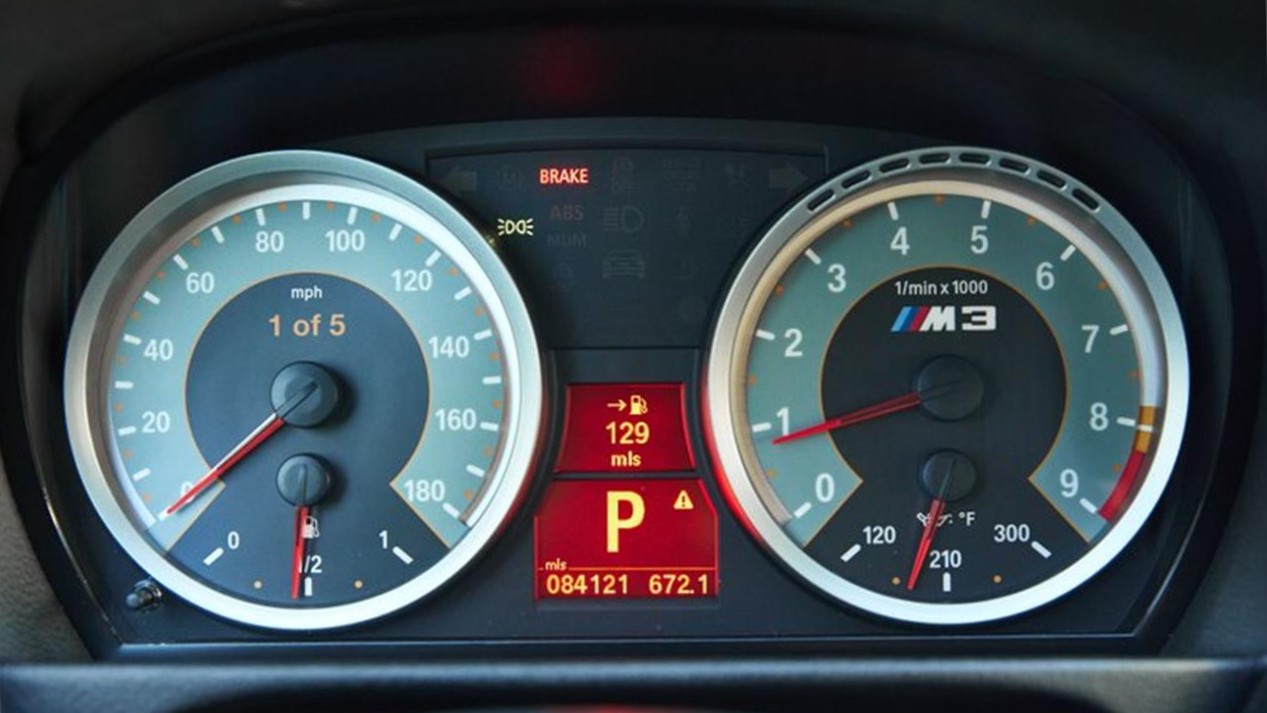
For 2001, the “E46” M3 coupe and convertible returned with a 3.2-liter straight-six putting out 343 horsepower. North Americans gave a sigh of relief because now they were not treated as second-class citizens since BMW was able to create an engine certified the world over, though horses fell to 333 thanks to minor specification differences that likely could not be felt by the seat of the pants.
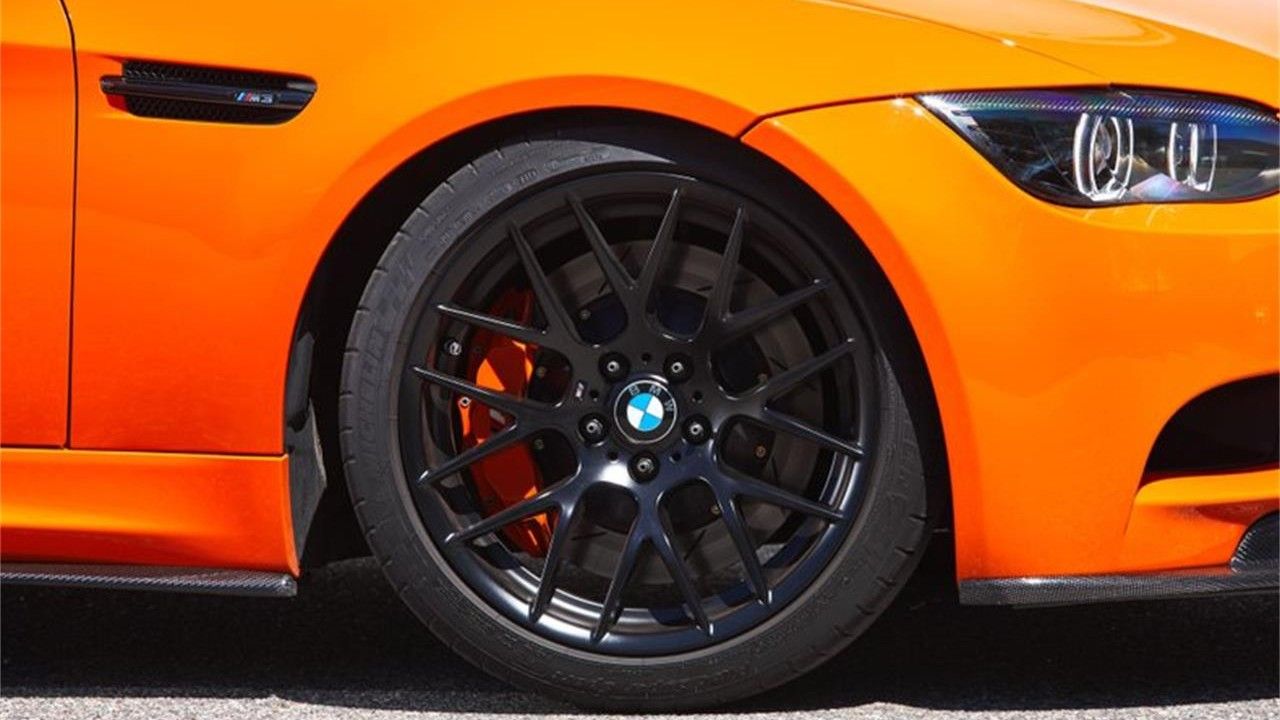
And then there was the “E9x” M3, known as such because BMW offered the M3 as an E92 (coupe), E93 (convertible) and, in a return to the fold, the E90 (sedan). Interestingly, this generation of M3, which began for the 2008 model year, was powered by a DOHC V8 measuring 4.0 liters. Horsepower was 414 the world over, marking the first time that North Americans didn’t have to settle for second-best. Starting in 2011, the “ZCP” Competition Package became available for the coupe and sedan. This reduced the ride height by 10 mm, revised the tuning of the Electronic Damping Control, added a track-oriented M Dynamic Mode for the Dynamic Stability Control, and upgraded the wheels to Y-spoke 19-inchers.
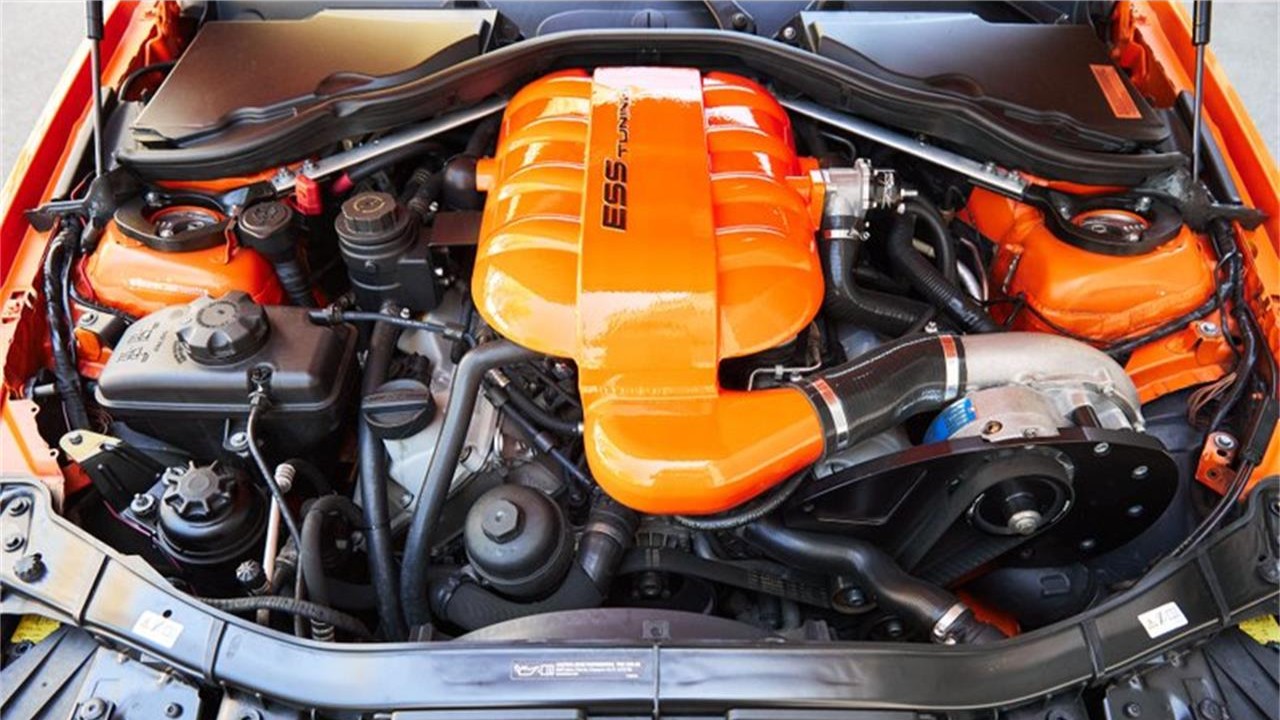
This 2011 BMW M3 Competition Sedan is interesting because 2011 was the first year for the Competition Package and the final year for the E90 M3 (though the conventional E90 continued for two more years). For the model year, 2,170 M3 sedans were built, of which 1,220 were equipped with the Competition Package. Of those, only five M3s were built in Fire Orange, one of 30 special-order M3s painted in a “different” color. According to the seller, “the original owner [spent] 10s of thousands of dollars on modifications on top of the $72,325 MSRP,” leaving us with a completely unique vehicle. “To keep the Fire Orange paint looking flawless, both the front end and rear bumper have been wrapped in Paint Protection Film and the entire car has been ceramic coated, meaning that even 12 years after production, the paint shows like new.” The front seats have been upgraded with AMC Custom BMW M Performance buckets with leather, Alcantara, and orange accents.
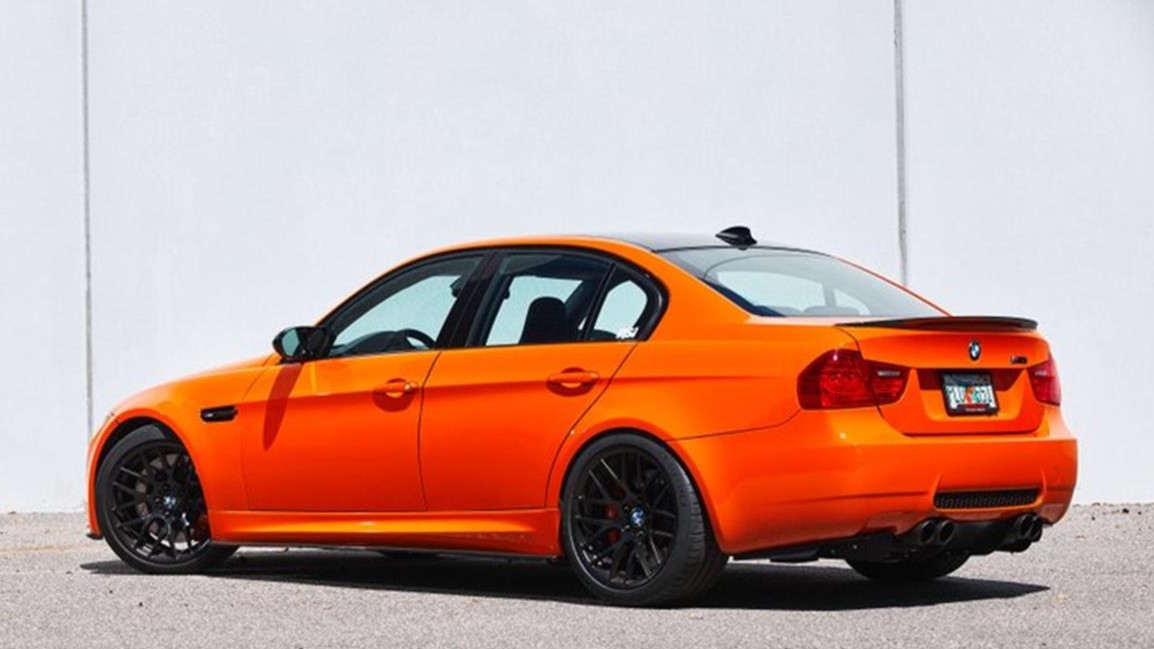
Of course, it’s the engine that’s the star, and it’s been enhanced with an ESS 650 supercharger kit that helps the V8 achieve 527 horsepower. There’s plenty more that’s been done to this Bimmer so, even if you’ve been itching for a coupe, it can be said that the number of doors is a hint there’s more to this $69,980 Bimmer.
Click here to view this Pick of the Day on ClassicCars.com
This 1937 Ford Deluxe Tudor sedan is a steel-bodied street rod that was built before the seller’s acquisition in 2021. The 454ci Chevrolet V8 is linked to a TH400 three-speed automatic transmission and a 9” rear end, and the car rides on a Pete & Jake’s chassis with tubular front control arms, rack-and-pinion steering, rear ladder bars, adjustable coilovers, power steering, and front disc brakes. The interior has been customized with two-tone upholstery, a roll cage, a B&M shifter, power windows, and VDO gauges, and other highlights include shaved doors, tunneled taillights, and 14” and 15” Weld Racing wheels. Work performed under current ownership has involved replacing the thermostat, spark plugs, and ignition wires. This custom Tudor is now offered at no reserve with a North Dakota title in the seller’s name.

The steel body was nosed and decked, the door handles were shaved, and the fenders were smoothed during the build. Tunneled rectangular taillights were also added to the rear valance before the car was painted in burnt orange and silver. Paint meter readings around the car are shown in the image gallery below.

Weld Racing 14” front and 15” rear wheels are mounted with 175/65 Goodyear Aquatred 3 tires and 31×16.5” Hoosier Quick Time Pro rear units. The Pete & Jake’s chassis features tubular front control arms, rack-and-pinion steering, rear ladder bars, a rear sway bar, and adjustable coilovers all around. The car is equipped with power steering, and braking is handled by front discs and rear drums.

The cabin is protected by a cage and houses bucket seats trimmed in two-tone upholstery along with color-coordinated door panels and bound carpeting. The dashboard fascia is painted satin black, and a B&M shifter has been installed along with power windows.

A Grant steering wheel is mounted on a tilt column and sits ahead of VDO instrumentation consisting of a 120-mph speedometer, a clock, and auxiliary gauges, while an AutoMeter Sport-Comp tachometer with a shift light is mounted atop the windshield frame. The five-digit odometer shows 8k miles, approximately 300 of which have been added under current ownership.

The rear wheel wells have been tubbed, and the trunk is lined with beige carpeting. The battery is housed in a custom box, and the fuel filler is accessed under a removable panel.

The 454ci Chevrolet V8 was rebuilt by a previous owner according to the seller. It is equipped with a four-barrel carburetor, an Edelbrock Victor Jr. intake manifold, a polished air cleaner lid and valve covers, and long-tube headers linked to a dual exhaust system that dumps ahead of the rear axle. The thermostat, spark plugs, and ignition wires were replaced in 2021.

Power is sent to the rear wheels through a TH400 three-speed automatic transmission and a 9” rear end. A fuel cell and electric fuel pump have been installed. Scraped paint on the chassis and corrosion on underbody components can be viewed in the gallery.

The car is titled as a 1937 Ford using the Minnesota-assigned VIN 184142484.
This 1952 Henry J Corsair was built into a gasser-style drag racer many years ago, and a refurbishment was initiated before it was acquired by the seller in 2023 as a roller without a drivetrain. Subsequent work involved installing a 402ci Chevrolet V8 with a dual-quad setup as well as a TH350 three-speed automatic transmission and a 12-bolt Positraction rear end. The car rides on a straight front axle, rear ladder bars with adjustable coilovers, and American Racing 15” and 16” wheels, while black bucket seats were installed along with a Winters Performance Sidewinder floor shifter, lap harnesses, and Marshall gauges. Other highlights include a Hilborn-style air scoop, a front-mounted fuel tank, a PerTronix distributor, a Mallory ignition coil, front disc brakes, and headers with cutouts and side outlets. This custom Henry J is now offered with a clean California title in the seller’s name.

The steel body was stripped and repainted in blue under prior ownership, and the seller notes evidence of repairs to the floor and rocker panels. Custom glass was cut for the vent windows, and the window seals were replaced under current ownership. A Hilborn-style air scoop protrudes through the hood, the trunk lid hardware has been shaved, and a front-mounted spun-aluminum fuel tank has been installed along with a tubular rear bumper. The vacuum-operated windshield wiper assembly remains in place, but the arms have been removed and capped. Paint chips, runs, and other flaws around the car are shown up close in the image gallery below.

American Racing 15” front and 16” rear wheels are wrapped in older 7.35” Goodyear bias-ply trailer tires and 12.50” M&H Racemaster slicks that the seller recommends replacing. The rear portion of the frame rails have been boxed, and custom crossmembers were added. A Speedway Motors straight front axle is supported by parallel leaf springs, while the live rear axle is outfitted with ladder bars, a Panhard bar, and adjustable coilovers. Braking is handled by front discs and rear drums, and the master cylinder, booster, and lines were replaced under current ownership. The seller notes that the parking brakes cables are not connected.

The cabin features bucket seats trimmed in black vinyl that extends to the transmission tunnel, rear bulkhead, and door panels. Color-coordinated carpets line the floors, and additional appointments include a Winters Performance Sidewinder floor shifter, lap harnesses, and an electric fan mounted under the dash.

The steering wheel has a blue metal-flake rim and sits ahead of Marshall instrumentation consisting of a 160-mph speedometer, a 10k-rpm tachometer, and auxiliary gauges. The digital odometer has not been calibrated, and total mileage is unknown.

The 402ci Chevrolet V8 is equipped with an Edelbrock intake manifold and dual four-barrel carburetors as well as a PerTronix Flame Thrower distributor, a Mallory ignition coil, and finned valve covers. The engine is said have an aftermarket camshaft. Four-into-one headers with capped cutouts flow into 2.5” exhaust pipes with glasspacks and side outlets. Cooling is provided by a high-volume water pump and an aluminum radiator with dual electric pusher fans. The seller notes the exhaust system is loud.

The TH350 three-speed automatic transmission has an aluminum pan and an external oil cooler. A custom driveshaft is linked to a 12-bolt rear end with a Positraction differential and 3.73:1 gearing.

The seller-provided summary details the build and additional history.

The car is titled by the body number 52344216, which appears on the identification plate shown above. The serial number K5231203343 can be viewed in the gallery.
The car is currently registered as Planned Non-Operation in the State of California, and the title carries a Title Only notation.
This 1950 Ford Custom Deluxe Club coupe was acquired by the seller in 1997, and it has since been overhauled and modified. The exterior was repainted Champagne, the interior was redone with two-tone upholstery, and the the car was lowered with a replacement front end with power-assisted rack-and-pinion steering and disc brakes. It is powered by a 302ci V8 that was rebuilt in 2017, and a B&M shifter and shift kit were installed for the automatic transmission. The car also has a chromed steering column, a trio of auxiliary gauges, a Weiand intake manifold, a Holley carburetor, and a dual exhaust system. This Shoebox is now offered with service records and a clean California title in the seller’s name.

The body was repainted Champagne in 2021, at which time dents were repaired, chrome was replated, and the lenses, weather seals, and emblems were replaced.

The front end has been lowered with a replacement clip featuring power-assisted rack-and-pinion steering and disc brakes. Lowering blocks were used out back, and the 15″ body-color steel wheels wear covers and 205/75 Coker Classic tires.

The interior was redone with Dynamat insulation, two-tone upholstery, and replacement floor coverings. A B&M shifter has been installed, and the steering column was chromed before a replacement wheel was mounted.

A trio of gauges is mounted below the dashboard. The seller notes the speedometer, odometer, parking brake, and horn do not work, and they estimated they have driven the car 1k miles. Total chassis mileage is unknown.

The 302ci V8 was rebuilt in 2017 according to the seller. It is topped by a Weiand intake manifold, a Holley carburetor, and an open-element air cleaner along with Cobra-script valve covers.

The seller tells us the C4 automatic transmission was fitted with a shift kit and replacement gaskets, and the fuel tank was dropped and refurbished. A dual exhaust system has been installed.

The car is titled as a 1950 Ford in California using VIN B0DA126152
The 1990s were a transformative period in the automotive industry, witnessing the emergence of production vehicles that seamlessly blended futuristic design and cutting-edge technology. These cars, once confined to the realm of concept vehicles, began to materialize on the streets, offering consumers a glimpse into the future of automotive innovation. This era marked a significant shift, where visionary designs and advanced features previously reserved for prototypes became accessible to the general public.
Each year, members of the Acura NSX Club of America (NSXCA) enjoy the opportunity to get together for an annual meet-up. (Here’s a look at last year’s event which was held in Dallas.) This time around, about 250 people in over 100 NSXs converged in the Pacific Northwest to experience the hospitality, scenic roads, unique destinations, and culinary specialties that the area had to offer.
The event was described by some as “pure joy.” If you have ever been part of an automotive community, you know how special it can be to spot a fellow enthusiast on the road. Now, take that same emotion and multiply it by ten or a hundred. It doesn’t matter whether your car is a project car or a Pebble Beach showpiece—the feeling of camaraderie is equally strong.

Team Effort
Ira Leventhal, a long-time NSXCA member from Portland, served as part of a team of volunteers who put on this year’s multi-day program which was based at Tacoma’s Hotel Murano. Ira emphasized that the event could not have happened without the help of many individuals, as well as the many companies who contributed to its success via sponsorships.
Ira says, “As I reflect back on this year’s event, it’s still humbling to know I was a part of making this weekend the fun event that it was.”
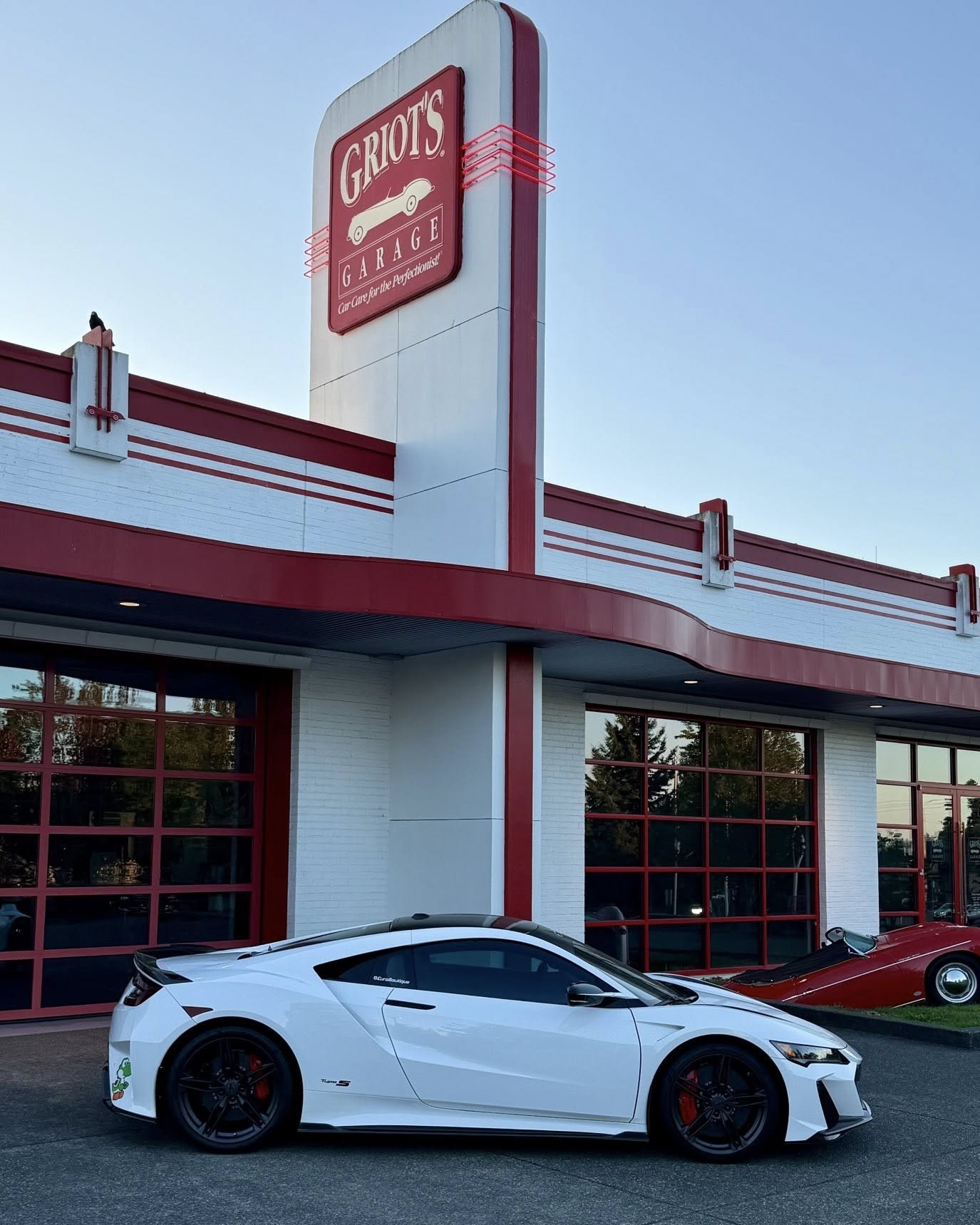
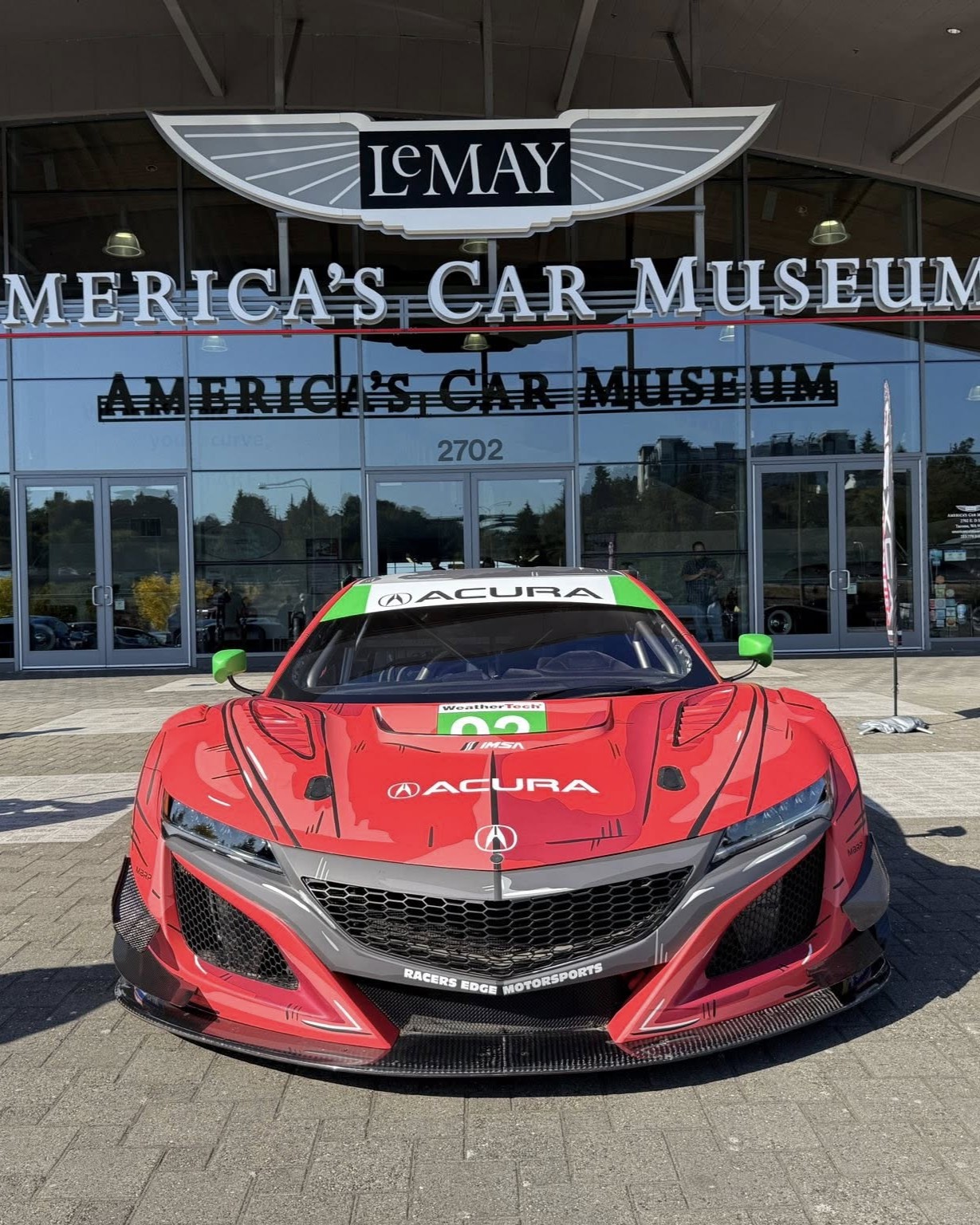
Select Highlights
Organizers sought to incorporate something for everyone—making sure that NSXPO incorporated plenty of time to socialize with other enthusiasts in addition to driving their cars.
- NSXPO began with two track days at Ridge Motorsports Park, where NSX drivers were able to put their cars—and their driving skills—to the test.
- Griot’s Garage, based in Tacoma, was established in 1990 and has become one of the car-detailing industry’s key players. Griot’s hosted the NSXCA for a concours d’elegance and even offered complimentary product shipping for NSXPO attendees.
- Private tours were offered at LeMay: America’s Car Museum, which is home to about 300 of the world’s most iconic vehicles.
- A scenic rally headed into the Puget Sound area, where a misty morning, tall fir trees, and sweeping corners gave NSX drivers an authentic Pacific Northwest feel.
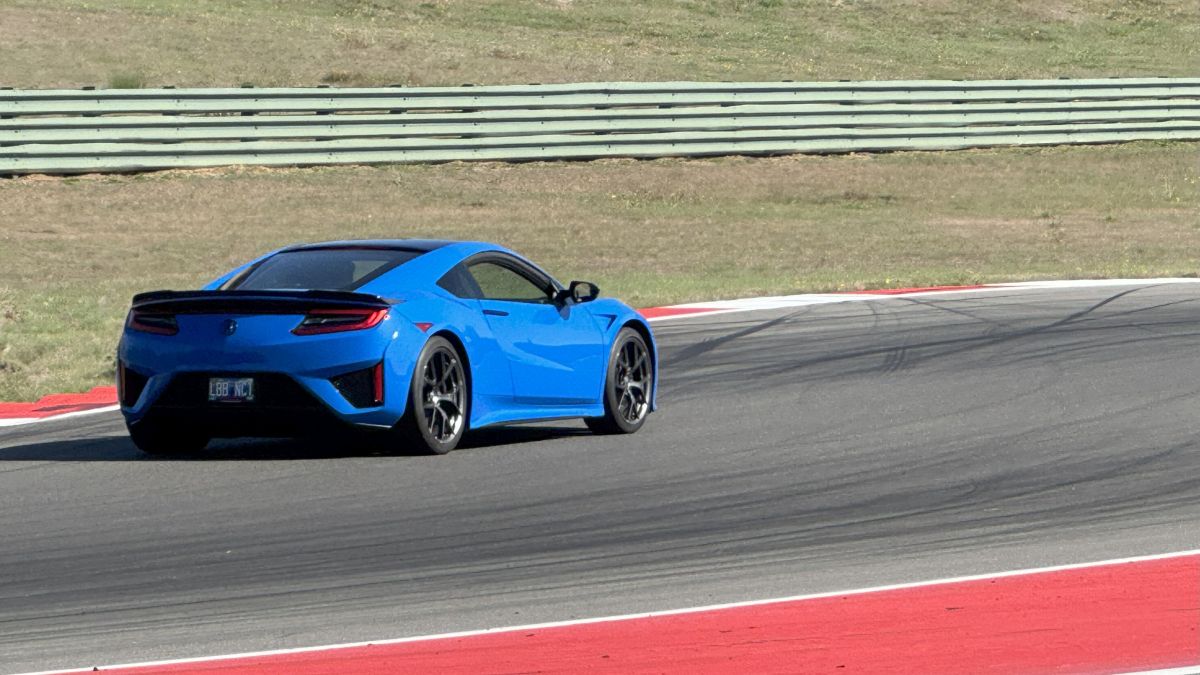
Keynote Speaker and Support from American Honda
Ted Klaus, who retired in late 2020 after a 30-year career with Honda, addressed the group during the closing awards ceremony and gala banquet. Klaus was the key development lead for the second-generation “NC1” chassis Acura NSX, which launched in 2017 as a twin-turbocharged, all-wheel drive hybrid supercar.
Klaus says, “With this project, we sought to build a bridge, one that takes Honda back to its roots of innovation and engineering excellence, but also to the future, harnessing next-generation technology to deliver a car that is uniquely Honda.”
Some lucky NSXCA members even got to interact with Klaus at the track. It’s also worth noting that American Honda had a strong contingent of representatives on-hand at the event, demonstrating a commitment to the enthusiasts who keep events like NSXPO going. A team from Honda Japan was even engaged and receptive to community feedback.
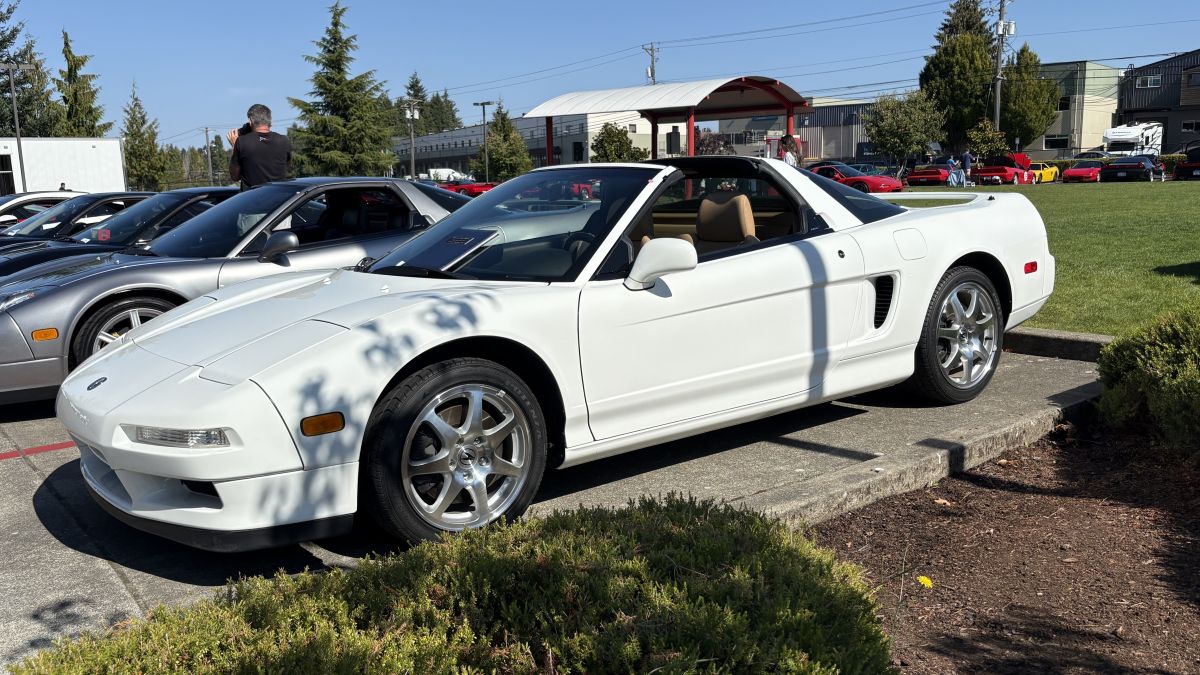
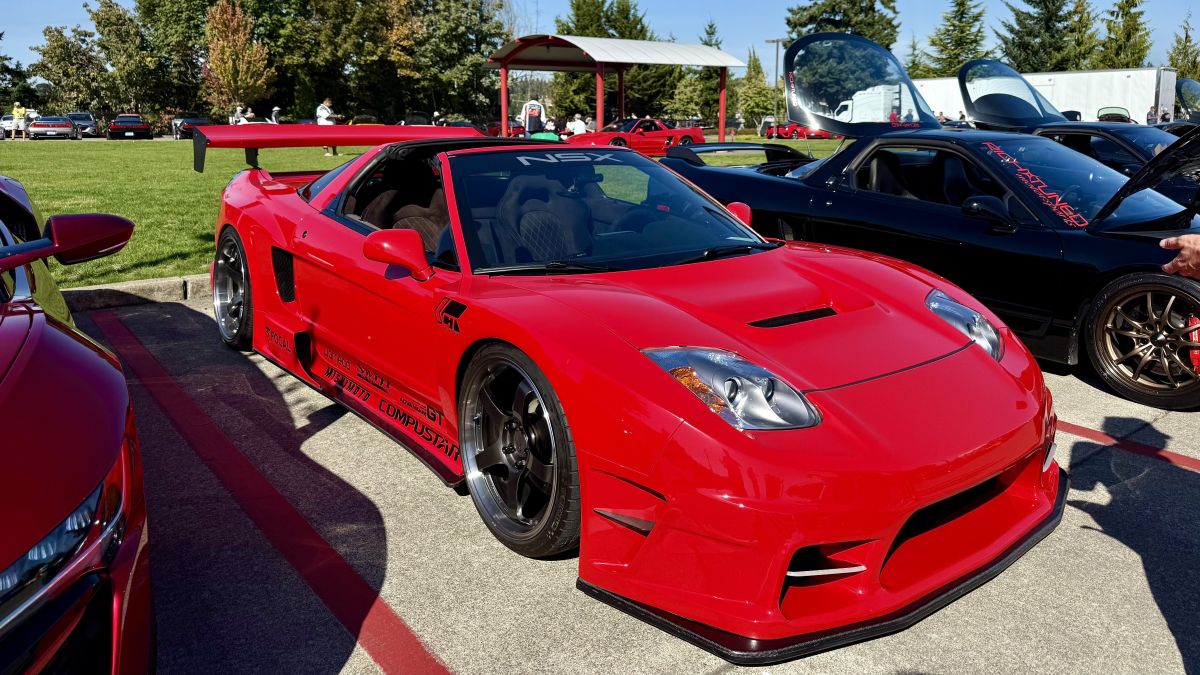
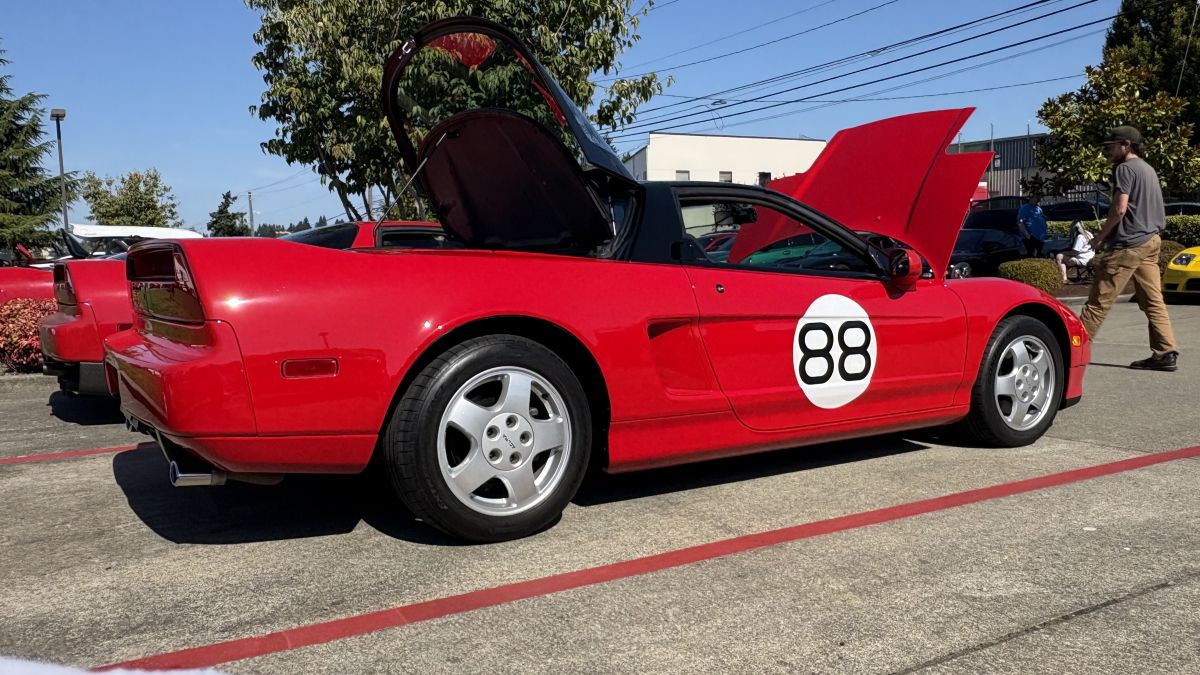

Award Winners
The caliber of cars in attendance was top tier, but a few members in particular stood out:
• Best Engine Bay: Brian Miller
• Best Interior: Eric Loberg
• Best Modified NA1: Richard Todd
• Best Modified NA2: David Fox
• Best Modified NC1: Chuck Ferguson
• Best Stock NA1: Nessa and Sean Lee
• Best Stock NA2: Brown Maloney
• John Vasos Award: Matt Cole
• Peoples’ Choice: Chuck Ferguson

Charitable Causes
One of the key objectives of NSXPO is to give back to the community. The Seattle NSXPO team pledged a commitment of $15,000 between the following two organizations:
- Dream Drives for Kids, established as a non-profit in 2014 to benefit children undergoing treatment for a wide range of illnesses.
- Mary’s Place Seattle, established in 1999 to help thousands of women and families move out of homeless into more stable situations.
Ira adds, “I’m happy to share we exceeded our pledge. Giving back to the communities we bring NSXPO to is becoming a highlight that we’re proud of.”
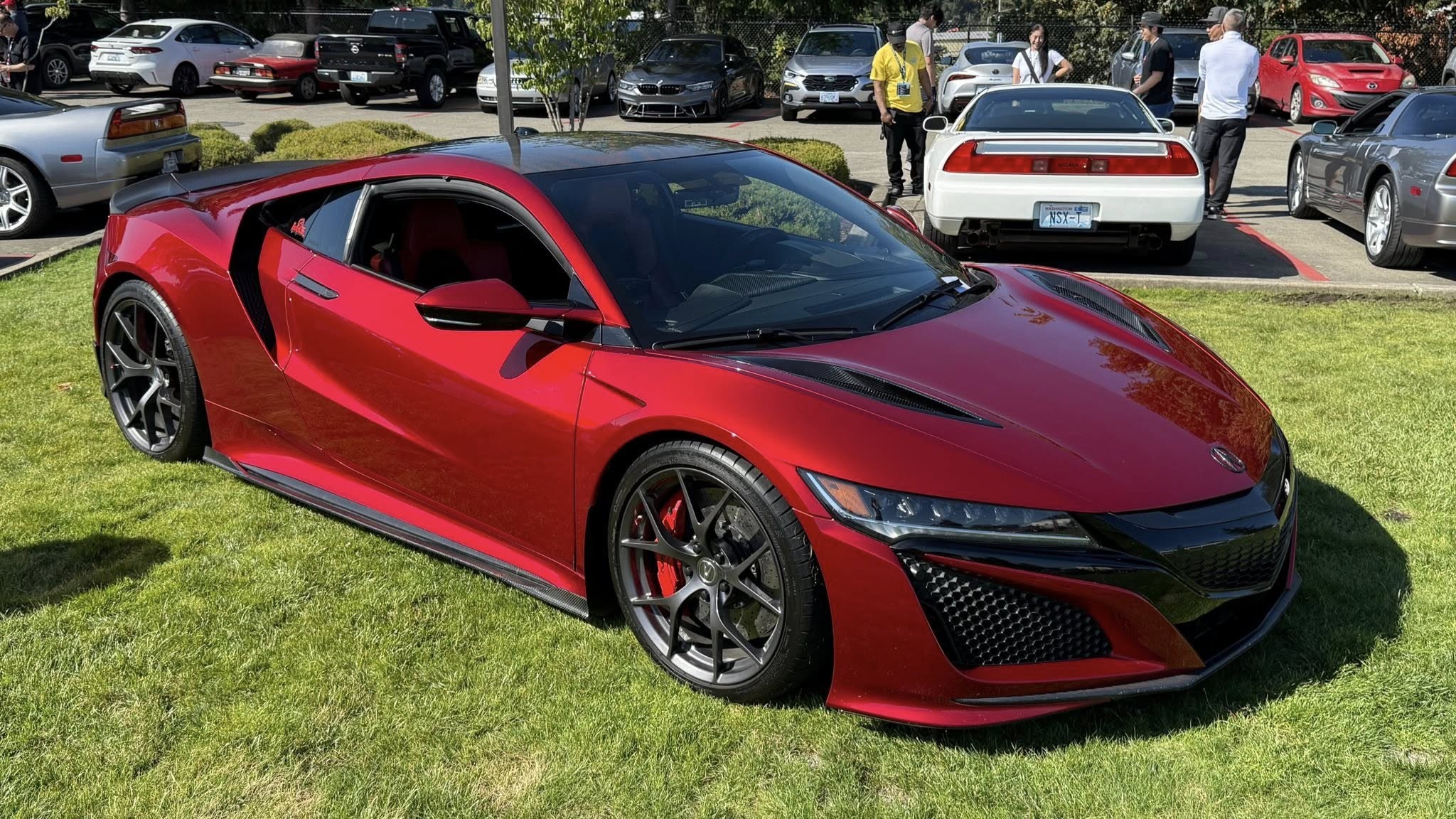
Looking Ahead
The announcement about next year’s dates and location has been made public. NSXPO 2026 will be held in Orlando the first week of October. Stay tuned to the NSXCA homepage for information on membership and a calendar of upcoming events.
Thanks, Ira and the NSXPO team, for sharing your event with us and fueling the passion for others who would like to get involved!
